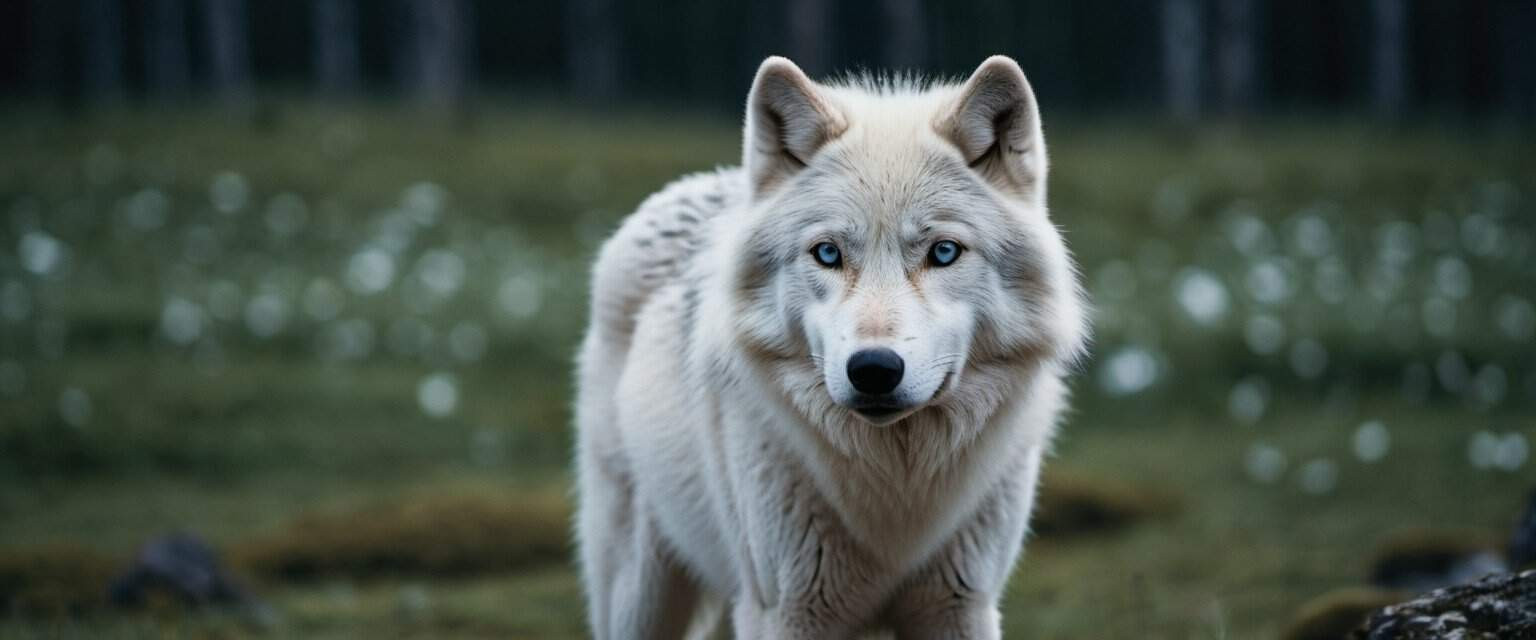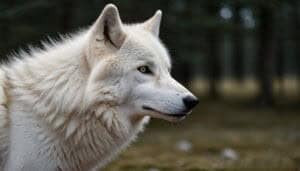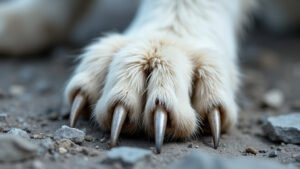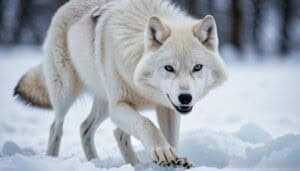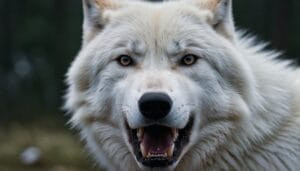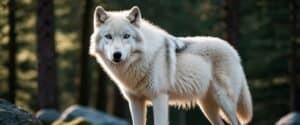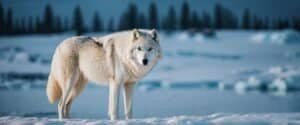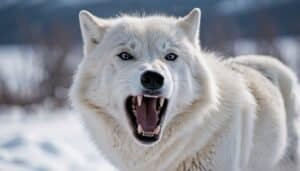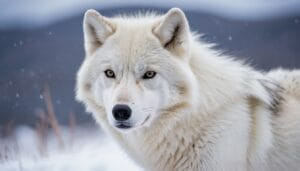Introduction
In this article, we will explore the average and range of weight of adult Arctic wolves, shedding light on the minimum and maximum weights, as well as the differences between males and females
We’ll examine the factors that influence their weight, from diet and food availability to climate conditions and health issues. Seasonal and geographic variations in their weight will be discussed, providing a comprehensive view of how these majestic creatures adapt to their environment
Furthermore, we will compare the weight of Arctic wolves with other wolf subspecies, such as gray wolves and red wolves, highlighting the unique characteristics of each. We’ll trace the development of their weight from birth to adulthood, illustrating the growth patterns and milestones of young wolves
Lastly, the methods scientists use to measure the weight of Arctic wolves in the wild, along with the challenges they face, will be covered. Join us on this journey as we uncover the weight dynamics of Arctic wolves, gaining a deeper appreciation for these resilient and adaptable predators
Average and Range of Weight of Adult Arctic Wolves
Arctic wolves, known for their stunning white coats and piercing blue eyes, are fascinating creatures of the north. One of the most intriguing aspects of these majestic animals is their weight. On average, an adult Arctic wolf weighs between 70 and 125 pounds
This weight range is influenced by various factors, including their environment, diet, and overall health. Understanding the average weight of these wolves not only gives us insight into their biology but also helps us appreciate the adaptations they have developed to survive in one of the harshest climates on Earth
Minimum and Maximum Weight of Arctic Wolves
While the average weight gives us a general idea, looking at the minimum and maximum weights provides a more detailed picture. Adult Arctic wolves can weigh as little as 60 pounds or as much as 175 pounds, depending on several factors such as genetics, availability of food, and the season
During the summer months, when prey is more abundant, wolves tend to be heavier. In contrast, the scarcity of food in the winter can lead to weight loss. These variations highlight the wolves’ incredible ability to adapt to their environment, ensuring their survival through the changing seasons
Weight Differences Between Male and Female Arctic Wolves
Just like many other animal species, there are noticeable weight differences between male and female Arctic wolves. Males are generally larger and heavier, weighing between 85 and 125 pounds. Females, on the other hand, are usually lighter, with weights ranging from 70 to 100 pounds
These differences are not just interesting facts; they play a crucial role in the dynamics of wolf packs. The larger size of the males often makes them the primary hunters, while the females, with their slightly smaller frames, are highly agile and adept at nurturing the young and maintaining pack cohesion
Factors Affecting the Weight of Arctic Wolves
The weight of an Arctic wolf isn’t just a number; it’s a reflection of various interconnected factors that influence their survival and well-being. Let’s dive into the key elements that shape the weight of these magnificent creatures
Diet and Food Availability
An Arctic wolf’s diet is a primary factor in determining its weight. These predators mainly hunt caribou, musk oxen, and Arctic hares, but their menu can also include birds and smaller mammals. During the harsh Arctic winters, when prey is scarce, wolves may experience weight loss
Conversely, in seasons of abundance, they can gorge themselves and gain significant weight. The availability of food directly impacts their health and weight, making the hunt a crucial aspect of their daily lives
Climate and Environmental Conditions
The extreme Arctic climate plays a significant role in the weight of these wolves. During the long, frigid winters, wolves need to consume more calories to maintain body heat and energy levels. The thick snow and ice also make hunting more challenging, often leading to periods of food scarcity and weight fluctuation
In contrast, the brief summer months, with their relative abundance of prey, allow wolves to rebuild their strength and gain weight. The harsh environment continuously tests their resilience, directly affecting their weight
Common Diseases and Their Effect on Weight
Like all wild animals, Arctic wolves are susceptible to various diseases and parasites, which can significantly impact their weight. Mange, a skin disease caused by mites, can lead to severe weight loss as affected wolves struggle with itching, fur loss, and infection
Other illnesses, such as rabies or distemper, can also lead to decreased appetite and weight loss. The health of a wolf is closely tied to its weight, making disease prevention and survival a critical factor
General Physical Condition and Healthy Weight
The overall physical condition of an Arctic wolf is a cumulative result of its diet, environment, and health. A healthy wolf, with a balanced diet and free from disease, maintains a robust weight that allows it to hunt efficiently and survive the harsh conditions of its habitat
Physical injuries from hunting or fights with other wolves can also impact their weight. Recovery from injuries requires energy and nutrition, which can be challenging to obtain in the wild. Thus, a wolf’s weight is a vital indicator of its general well-being and ability to thrive in the Arctic tundra
Weight Variations in Arctic Wolves
Arctic wolves, like many wild animals, experience fluctuations in their weight due to various factors. Understanding these variations helps us appreciate how these resilient creatures adapt to their harsh environment. Let’s delve into the different aspects that influence the weight changes in Arctic wolves
Seasonal Weight Variation in Arctic Wolves
As the seasons change, so do the living conditions for Arctic wolves. During the long, frigid winters, food can be scarce, causing wolves to lose weight as they expend more energy to stay warm and hunt
Conversely, the summer months often bring an abundance of prey, allowing wolves to replenish their reserves and gain weight. This cyclical pattern of weight loss and gain is crucial for their survival in the extreme Arctic climate
Geographic Variations in the Weight of Arctic Wolves
The weight of Arctic wolves can also vary depending on their geographic location. Wolves living in different regions of the Arctic may have access to varying amounts of food and face different environmental challenges
For instance, wolves in areas with abundant prey might be heavier compared to those in more barren regions. Additionally, localized weather patterns and terrain can impact their ability to hunt and find food, further influencing their weight
Comparison of the Weight of Arctic Wolves with Other Subspecies
When it comes to the majestic Arctic wolf, understanding how their weight compares to other subspecies offers fascinating insights into their unique adaptations. In this section, we’ll delve into the specifics of how Arctic wolves measure up against their gray and red cousins, highlighting the distinct differences and similarities
Weight Differences Between Arctic Wolves and Gray Wolves
Arctic wolves and gray wolves, while similar in many ways, exhibit notable differences in their weight. The harsh conditions of the Arctic have led Arctic wolves to develop stockier builds, typically weighing between 85 to 115 pounds
In contrast, gray wolves, adapted to more varied environments, often weigh between 70 to 130 pounds. These differences are crucial for survival, as the Arctic wolf’s additional weight provides insulation and energy reserves crucial for enduring extreme cold and food scarcity
Weight Differences Between Arctic Wolves and Red Wolves
Red wolves, another fascinating subspecies, present a different comparison. Generally lighter than both Arctic and gray wolves, red wolves weigh between 45 to 80 pounds. This lighter frame is an adaptation to the warmer climates and different hunting strategies of their habitats
By comparing these three subspecies, we gain a deeper understanding of how each has evolved to thrive in its specific environment, with the Arctic wolf’s heavier build being a testament to its resilience in one of the planet’s most unforgiving landscapes
Weight Development from Birth to Adulthood
The journey of an Arctic wolf from a tiny pup to a majestic adult is nothing short of extraordinary. In this section, we’ll take a closer look at how their weight changes throughout their growth stages, from birth to full maturity
Birth Weight of an Arctic Wolf
Arctic wolf pups are born small and vulnerable, weighing only around 1 pound (0.45 kg) at birth. These tiny creatures are blind, deaf, and entirely dependent on their mother for warmth and nutrition. Despite their fragile beginnings, they are equipped with the tenacity to thrive in one of the harshest environments on Earth
Growth and Weight Gain in Young Wolves
The first few months of an Arctic wolf’s life are marked by rapid growth. By the time they are a month old, their weight can quadruple. During this period, they begin to open their eyes, explore their surroundings, and start weaning off their mother’s milk to consume regurgitated food
As they grow, their diet shifts to solid food, and they gain strength and size, preparing for the challenges of the wild. By six months, young wolves can weigh between 30 to 50 pounds (13.6 to 22.7 kg), rapidly approaching their adult weight. This phase is crucial as they learn vital survival skills from their pack members, ensuring they are well-equipped for adulthood
Methods of Measuring the Weight of Arctic Wolves
Understanding the weight of Arctic wolves is crucial for studying their health, behavior, and adaptation to their harsh environment. Scientists have developed various methods to accurately measure the weight of these elusive creatures. In this section, we’ll delve into the techniques used and the challenges faced by researchers in the field
Techniques Used by Scientists
To measure the weight of Arctic wolves, scientists employ a variety of innovative techniques. One common method involves the use of tranquilizer darts to safely sedate the wolves, allowing researchers to handle and weigh them with minimal stress. Once sedated, the wolves are placed on a portable scale, providing an accurate measurement of their weight
Another technique is the use of GPS collars equipped with sensors. These collars, while primarily used for tracking movements, can also give indirect weight data by monitoring the wolf’s activity levels and energy expenditure, which can be correlated with changes in body mass
Additionally, non-invasive methods like photographic analysis are gaining popularity. By taking high-resolution images of the wolves and using software to analyze body dimensions, scientists can estimate the weight without the need for physical contact. This method is particularly useful for long-term monitoring and reducing the impact on the wolves’ natural behavior
Challenges in Measuring Weight in the Wild
Measuring the weight of Arctic wolves in their natural habitat comes with a unique set of challenges. The extreme weather conditions of the Arctic can make fieldwork incredibly difficult. Heavy snow, freezing temperatures, and remote locations mean that researchers often have to work in harsh and unpredictable environments
Moreover, the wolves themselves are highly mobile and elusive, making it hard to locate and approach them. The use of tranquilizers, while effective, must be done with precision to avoid causing undue stress or harm to the animals. There’s also the risk that tranquilized wolves might become targets for other predators or might not fully recover from the sedation in the harsh Arctic climate
Ethical considerations are also paramount. Researchers must ensure that their methods do not disrupt the wolves’ natural behaviors or negatively impact their well-being. Balancing the need for accurate data with the responsibility to protect these animals is a constant challenge in wildlife research
Conclusion
Arctic wolves are remarkable creatures that have adapted to one of the harshest environments on Earth. By examining their average weight and the factors that influence it, we gain valuable insights into their biology and survival strategies. Our exploration revealed that the weight of Arctic wolves varies depending on their sex, diet, environmental conditions, and health status. Seasonal and geographic variations further illustrate the adaptability of these wolves to their surroundings
Comparing the weight of Arctic wolves with other subspecies like gray wolves and red wolves highlights the unique physical characteristics and adaptations of each. Understanding the growth patterns from birth to adulthood also provides a comprehensive view of their development and the challenges they face in the wild
The methods used by scientists to measure the weight of Arctic wolves, despite the challenges posed by the extreme Arctic environment, are crucial for accurate data collection. These techniques, ranging from tranquilizer darts and GPS collars to non-invasive photographic analysis, underscore the ingenuity and dedication of wildlife researchers
In sum, the study of Arctic wolf weight is a testament to the resilience and adaptability of these magnificent predators. By continuing to monitor and understand their weight dynamics, we can contribute to the conservation efforts needed to protect them in their natural habitat
